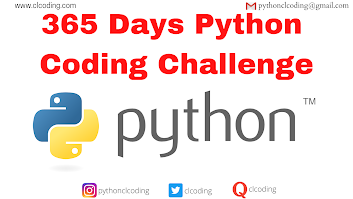- random(): Returns a random float number between 0 and 1
- sample(): Returns a given sample of a sequence
- shuffle(): Takes a sequence and returns the sequence in a random order
- choice(): Returns a random element from the given sequence
- choices(): Returns a list with a random selection from the given sequence
- randint(): Returns a random number between the given range
- uniform(): Returns a random float number between two given parameters
Tuesday 29 March 2022
Friday 25 March 2022
Sequence Matcher in Python
Python Coding March 25, 2022 Python No comments
#!/usr/bin/env python
# coding: utf-8
# # Sequence Matcher in Python
# In[3]:
from difflib import SequenceMatcher
text1 = input("Enter 1st sentence : ")
text2 = input("Enter 2nd sentence : ")
sequenceScore = SequenceMatcher(None, text1, text2).ratio()
print(f"Both are {sequenceScore * 100} % similar")
#clcoding.com
# In[ ]:
Age Calculator using Python
Python Coding March 25, 2022 Python No comments
Saturday 19 March 2022
Image to Pencil Sketch in Python
Python Coding March 19, 2022 Python No comments
Sunday 13 March 2022
Voice Recorder in Python
Python Coding March 13, 2022 Python No comments
Download YouTube videos in Python
Python Coding March 13, 2022 Python No comments
Captcha in Python
Python Coding March 13, 2022 Python No comments
Secrets Python module
Python Coding March 13, 2022 Python No comments
Saturday 5 March 2022
Mouse and keyboard automation using Python
Python Coding March 05, 2022 Python No comments
Friday 4 March 2022
Python Secrets Module
Python Coding March 04, 2022 Python No comments
Popular Posts
-
This textbook grew out of notes for the ECE143 Programming for Data Analysis class that the author has been teaching at University of Cali...
-
What you'll learn Use SQL commands to filter, sort, & summarize data; manipulate strings, dates, & numerical data from differe...
-
There are 6 modules in this course Cybersecurity affects everyone, including in the delivery of basic products and services. If you or you...
-
This Python code defines a function and then calls it with specific arguments. Let's break it down step by step: Function Definition: ...
-
In Python, dictionaries are compared based on their keys and corresponding values. When you use the != operator to compare two dictionarie...
-
What you'll learn Develop custom Python scripts to automate cybersecurity tasks. Apply Python to meet objectives through the cybersecu...
-
import turtle def draw_ring(color, x, y): turtle.penup() turtle.color(color) turtle.goto(x, y) turtle.pendown() turtle...
-
There are 12 modules in this course Stanford's "Introduction to Statistics" teaches you statistical thinking concepts that a...
-
What you'll learn Create basic visualizations such as line graphs, bar graphs, and pie charts using Excel spreadsheets. Explain the im...
-
Are you eager to dive into the world of Java programming and software engineering? Coursera offers an excellent course titled Java Program...

























s.PNG)

























